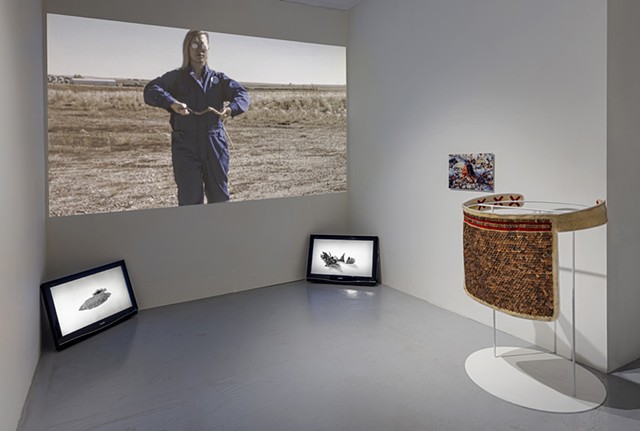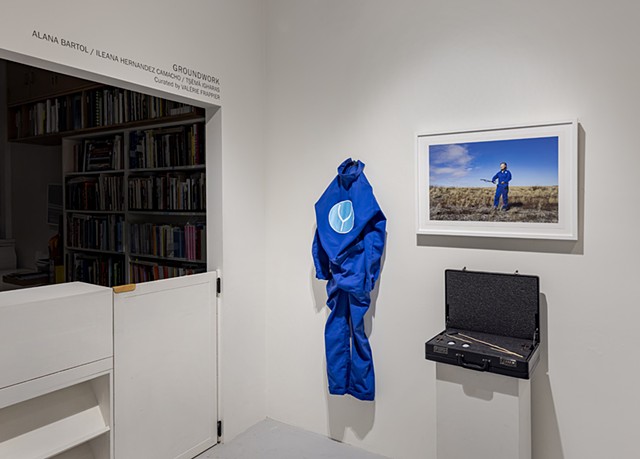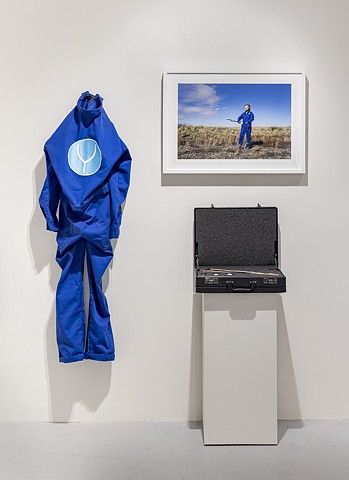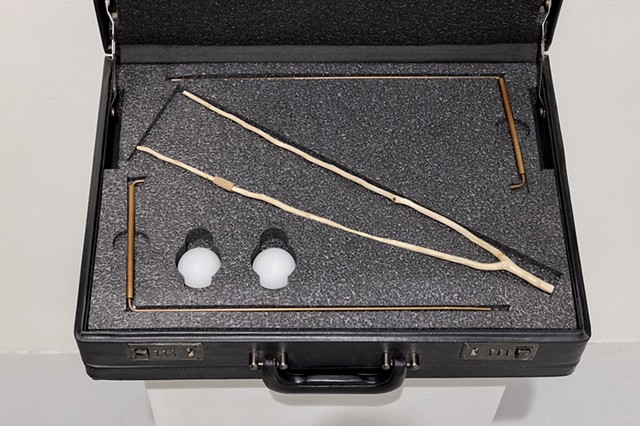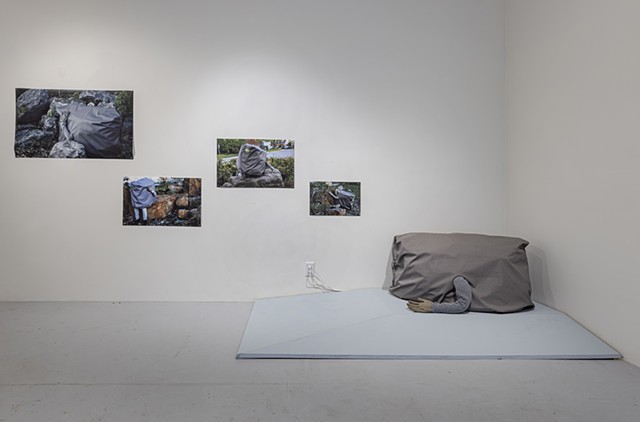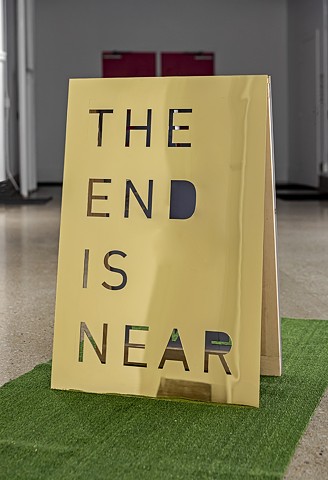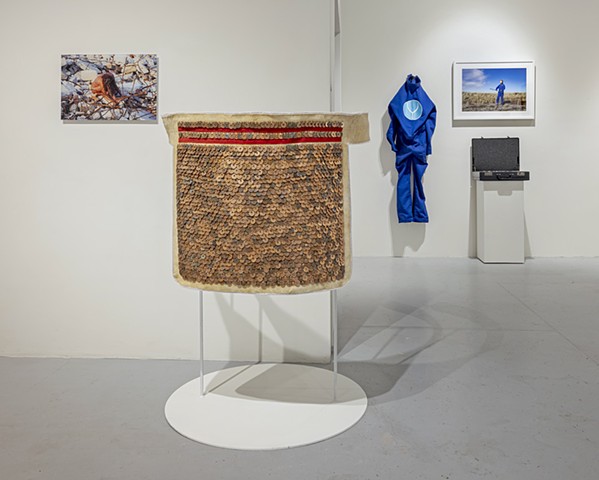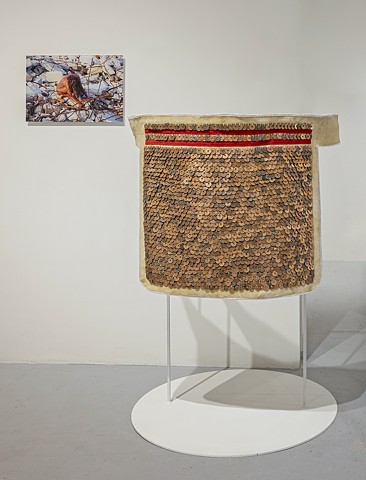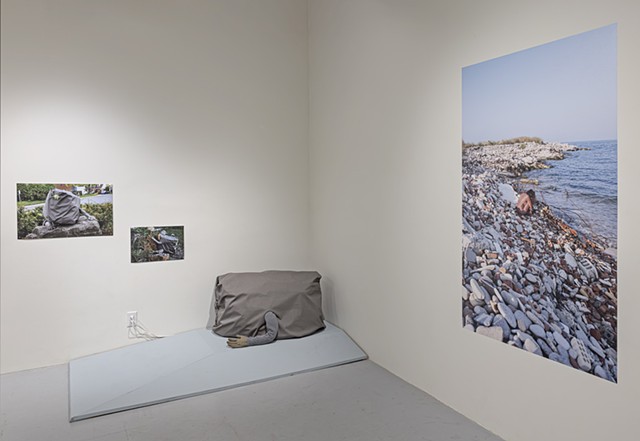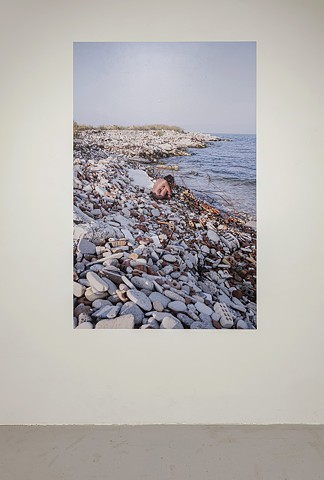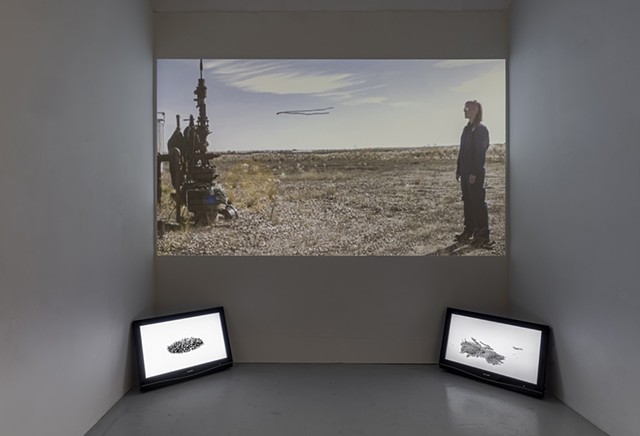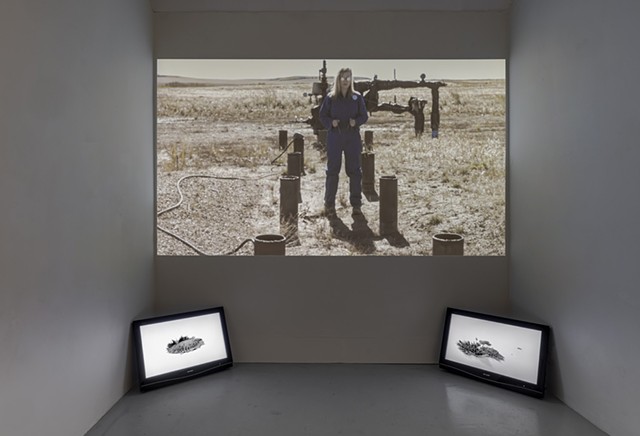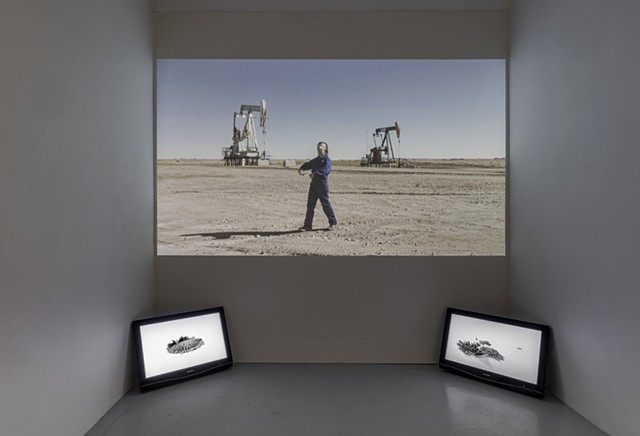Groundwork
EXHIBITION: GROUNDWORK
May 10, 2021 - August 15, 2021
Critical Distance Centre for Curators (CDCC) – Core Exhibition
Featured Exhibition at the 2021 Scotiabank Contact Photography Festival, Tkaronto/Toronto, ON
Artists: Alana Bartol, Ileana Hernandez Camacho, Tsēmā Igharas
Curator: Valérie Frappier
Click here to read Frappier's curatorial introduction. Click here to read a conversation with the curator and artists. To hear audio descriptions of the work and learn more, visit https://criticaldistance.ca/program/groundwork/. Photos: Toni Hafkenscheid.
In a 2013 interview with Naomi Klein, Michi Saagiig Nishnaabeg scholar Leanne Betasamosake Simpson explains that extractivism is not just the physical process of extracting natural resources, specifically on Indigenous lands, but that it is also a mindset. Simpson defines the term in the following way: “The act of extraction removes all of the relationships that give whatever is being extracted meaning. Extracting is taking. Actually, extracting is stealing—it is taking without consent, without thought, care or even knowledge of the impacts that extraction has on the other living things in that environment.”* Later in the interview, Simpson then turns to the alternative of an extractive mindset, which she describes as being centered in relationships. “The alternative is deep reciprocity. It’s respect, it’s relationship, it’s responsibility, and it’s local.”
Working from Simpson’s definitions as a starting point, this exhibition considers how extractivism operates as a physical process underpinned by a pervasive colonial-capitalist mindset towards land use. By intersecting strands of ecology, geology, and performance theory, Groundwork seeks to grapple with the psychology of extractivism and foregrounds embodied performance as a method to bring focus to its alternatives. Within the scope of Canada’s geography, artists Alana Bartol, Ileana Hernandez Camacho and Tsēmā Igharas employ site-specific performance to question and imagine beyond the colonial-capitalist structures that largely shape humanity’s relationship with the environment.
Groundwork also cites performance scholar Laura Levin’s theorizing of camouflage as a political performance practice in its centering of camouflage strategies. Such strategies critically probe the politics surrounding land use and the constructed binary between the human and the non-human. In her 2014 book Performing Ground, Levin writes that camouflage, used as a political practice, “is as much about revealing as concealing,” as it equally “highlights the non-human site as itself a performing entity, reminding us that the communication between self and setting is rarely unidirectional.” Bartol, Hernandez Camacho and Tsēmā each make use of a camouflage/infiltration strategy in their respective works to build reciprocal relationships with their environments and unsettle the status quo of extractive logics. This reciprocal approach is articulated through the deep attunement they cultivate with their respective locations. Lens-based documentation of the artists’ site-specific interventions, displayed alongside performance remnants such as the garments and tools used during these actions, together transmit dispatches from each artists’ location.
-Text by curator Valérie Frappier
*Leanne Betasamosake Simpson in “Dancing the World into Being: A Conversation with Idle No More’s Leanne Simpson,” YES! Magazine, March 6, 2013.
